Copper Canyon – Mexico
Beyond the magical beaches and beautiful colonial cities of Mexico, lies incredible Copper Canyon, four times larger than the Grand Canyon. ...
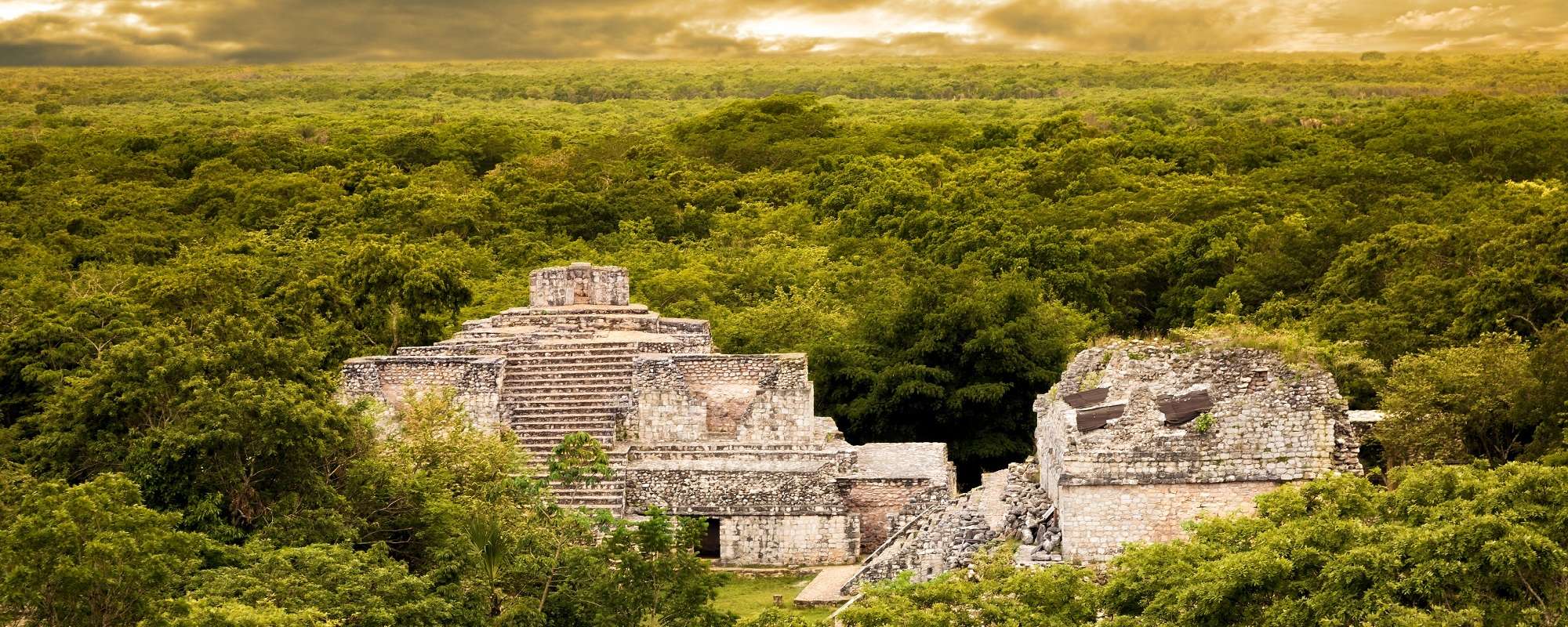
Mexico is an exceptionally rich cultural experience, with visits to colonial cities, artisans’ towns and breathtaking Mayan ruins vying for your attention, alongside tours to massive ancient pyramids and a spectacular train journey through the Copper Canyon.
Mexico City, big and sprawling, is not everybody’s favourite city. But there’s no question that this is a truly fabulous centre for pre-Hispanic and colonial art and is the base for trips to Taxco, the Pyramids of the Moon and Sun, and the Shrine of Guadalupe. You could easily spend many days visiting the museums and galleries in and around the city. The lure of the handicrafts, artwork and music bring visitors back to Mexico time and time again. Beyond the city are Mexico’s magical beaches, some splendid resorts, the many beautiful colonial cities and fascinating archaeological sites.
With a country so diverse and multifaceted, it’s hard to know what to do and how to go about doing it. Our team at South America Travel Centre have seen Mexico for themselves and through this personal experience coupled with their attention to detail can easily include the best of Mexico in your Latin America itinerary.
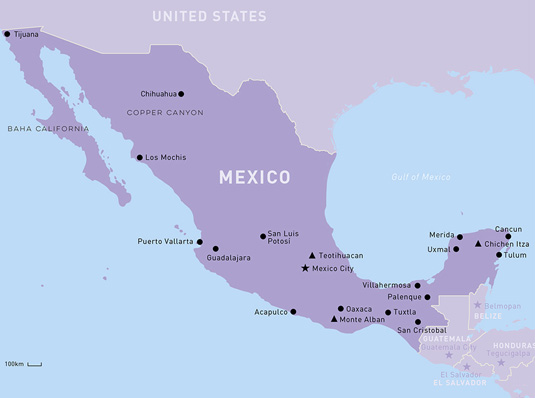

Chichén Itzá an amazing complex of Mayan ruins on Mexico’s Yucatán Peninsula. A massive step pyramid known as El Castillo dominates the site. Graphic stone carvings survive at structures like the ball court, Temple of the Warriors and the Wall of the Skulls. Nightly sound-and-light shows illuminate the buildings’ sophisticated geometry. A definite highlight and may have lost some of its mystique from being so heavily manicured. Great to see in combination with other less well maintained sites like Ek Balam.
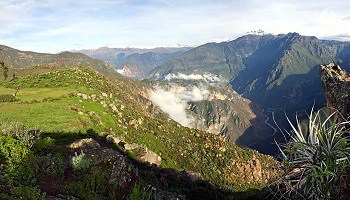
A spectacular train journey through deep gorges, over 37 bridges and through 86 tunnels, is a wonderful way for you to discover northern Mexico’s Copper Canyon. This remarkable area comprises not one but more than 20 canyons which together are four times bigger than the Grand Canyon. Travel through pine forests skirting the very edges of the canyons, all the way from the coastal plains to the arid heart of Mexico. Each night is spent in a village inn, giving you the opportunity to experience some of the local colour.

Perched on a cliff-top 12 metres above the sea, this small walled settlement of temples and watchtowers formed a fortress town and an important port in the waning days of the Mayan civilisation.

Located on the fringes of the dense Chiapas jungle and covering an area of 15 sq. km, the fascinating Mayan ruins you see here today date from the empire’s peak in the 7th century and represent only a small percentage of the spectacular complex of palaces, temples and terraces still to be excavated.
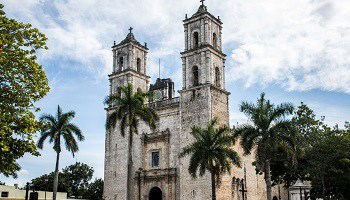
The prosperous capital city of the Yucatan State, sometimes known as the ‘White City’ because of its abundant use of limestone – it is an excellent base for exploring some of
the most renowned of the Mayan archaeological sites, such as spectacular Uxmal and Chichen Itza.

This captivating colonial city high in the central highlands gently climbs the hillsides of a pine-clad valley that is surrounded by six of Mexico’s national parks. Founded in 1528, its cobbled streets, red-tiled roofs and opulent churches and mansions are remnants of the days of Spanish colonisation, reflecting both the city’s colourful heritage and its current bohemian ambience. Nearby are Sumidero Canyon, 1000m deep, and the villages of San Juan Chamula and Zinacantan, each with its quite distinctive customs, regional dress and styles of worship.

The ‘Dia de los Muertos’ is an important date in many Latin American countries, among them Guatemala, Ecuador, Brazil and Bolivia, but, without doubt, it is most strongly associated with Mexico. Before Spanish colonisation in the 16th century, the three-day fiesta took place at the beginning of summer, but was later moved to coincide with the Christian festival of All Saints Day and All Souls Day on November 1st and 2nd.
For Mexicans this is a natural celebration as they believe in a life/death/rebirth cycle and that the souls of the dead return from the afterlife every year to visit their living relatives. It’s not only a time of prayer and communication but, as the dead would be insulted by mourning or sadness, it’s also a time to celebrate their lives with much food and drink, parties, and activities they enjoyed in life. Altars are built in the home and decorated with flowers and photographs of the deceased, and on them is placed the loved ones’ favourite food and drink, fruit and skull-shaped sweets, along with other treats for them to enjoy.
On the night of October 31st (All Hallows Eve), the children create a special children’s altar to invite the child spirits (angelitos) for a visit. November 1st sees the adult spirits return, and November 2nd is when families go to the cemetery to take gifts and decorate the graves and tombs of their relatives with orange marigolds, flowers thought to attract the souls of the dead, while candles on the grave illuminate the path back to their home.

Las Alcobas
Mexico City, Mexico
Top class design and the finest facilities. Usually located in a spectacular setting it may be an exclusive hotel in a meticulously restored historic building, or recognised as the leading property of an international chain.

La Casona De Tita
Oaxaca, Mexico
A perfect alternative to the big brand hotels:
exclusive and independently-owned properties with a smaller number of rooms and highly personalised services.
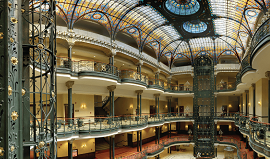
Gran Hotel Cuidad
Mexico City, Mexico
High quality with an excellent room standard, a full range of facilities and first-rate service; may be a new property or regularly refurbished with attention to ongoing maintenance.
Tourist-superior and tourist class accommodation is also available. For more information on the accommodation we offer, call 1300 784 794 or email contact@satc.com.au.
South America Travel Centre can look after all aspects of your holiday, including flights and travel insurance.
We start by asking you what your interests are and where you are interested in, when, for how long, what standard and style of accommodation. Once we have a good understanding of just what you’re looking for, we can begin to create a holiday to meet your time and budget requirements and, most importantly, that will deliver interest and enjoyment in an experience to exceed your expectations.
Please book early. Many of the hotels, lodges and cruise vessels we recommend are relatively small. This exclusivity combined with high demand means they can be booked out up to 6-8 months in advance.
If you’re thinking of travelling during any major holidays like Christmas, New Year and Easter, or during any festivals, our advice is simply to book as early as you can, even 12 months or more, and we can add flights as soon as they become available.
Australian citizens do not require a visa to enter Mexico. You will need to hold a valid passport and have a return ticket when you arrival.
Vaccinations are advised for common diseases like Hepatitis A and B, Typhoid as well as Influenza. There are no compulsory vaccinations.
We advise you to consult a Travel Doctor specialist prior to departure to assess any health risks in relation to your medical history and travel plans.
We have access to a wide range of airfares and have excellent relationships with our key airline partners. Our two main airline partners in Latin America are LATAM Airlines, QANTAS Airlines and Air New Zealand. We can also arrange internal flights for you within Latin America.
Irrespective of whether you book directly with us or with your preferred travel agent, we’ll request the details of all of your fights to ensure if there are any changes your transfers and other arrangements are adjusted accordingly.
Being such a large country, the temperature throughout Mexico can vary greatly throughout the different seasons and regions.
December-April is the best time to visit the country where there is little to no rain.
The coolest months are between December and February, which can be the best time to visit.
The wet season throughout the country begins in the south in May and lasts until October. A heavy shower can help rid the air of the strong humidity before it builds up again.
The Caribbean coast experiences Hurricane Season which can run from June to November.
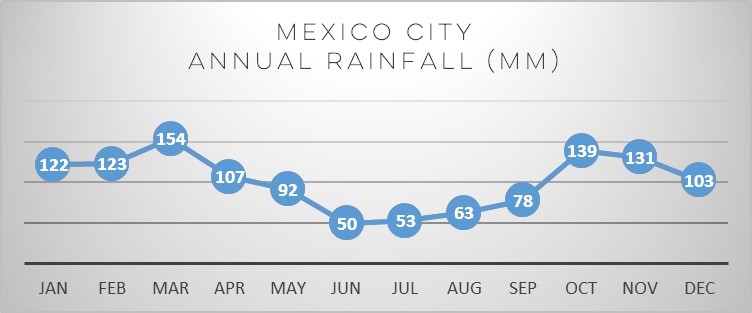
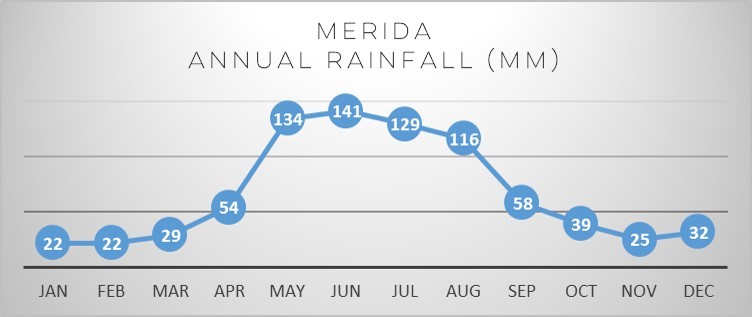
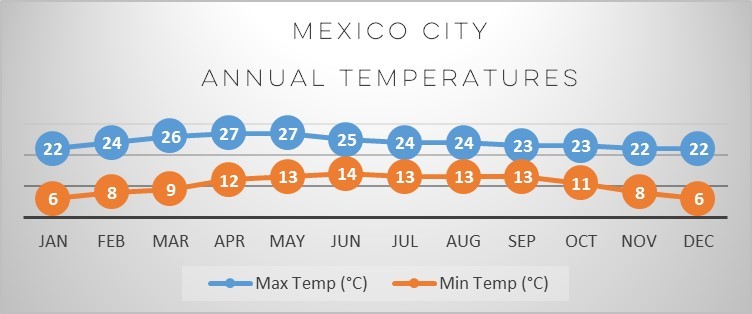
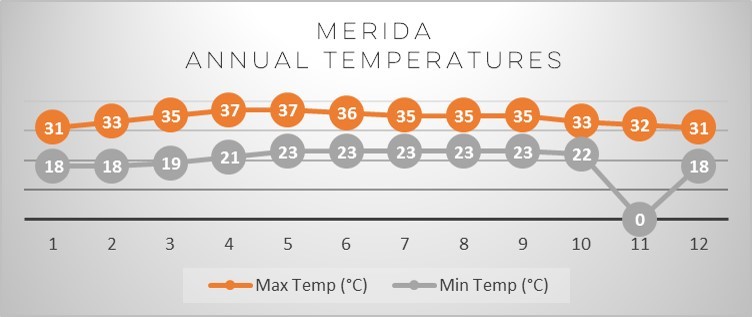
Beyond the magical beaches and beautiful colonial cities of Mexico, lies incredible Copper Canyon, four times larger than the Grand Canyon. ...
Not so long ago I had an unexpected opportunity to go to Mexico – or I should say, go back to Mexico after quite some years – and I’ve fallen in love with it all over again! You can now call me a born-again aficionado....
Now back in Sydney after a wonderful holiday. The EcoCamp was also fantastic! The whole holiday was co-ordinated beautifully – everything just flowed from one adventure to the next without a single problem. We now have 100’s and 100’s of absolutely spectacular photos to sort through. Interestedly we had 8 different flights whilst we were away and each one of them was either full or nearly full – people are obviously travelling again. Thank you so much for all your assistance in co-ordinating our Patagonia experience. With Kindest regards Joe & Judy
Joe & Judy
Now back in Sydney after a wonderful holiday. The EcoCamp was also fantastic! The whole holiday was co-ordinated beautifully – everything just flowed from one adventure to the next without a single problem. We now have 100’s and 100’s of absolutely spectacular photos to sort through. Interestedly we had 8 different flights whilst we were away and each one of them was either full or nearly full – people are obviously travelling again. Thank you so much for all your assistance in co-ordinating our Patagonia experience. With Kindest regards, Joe & Judy
Joe & Judy Chile February 2023
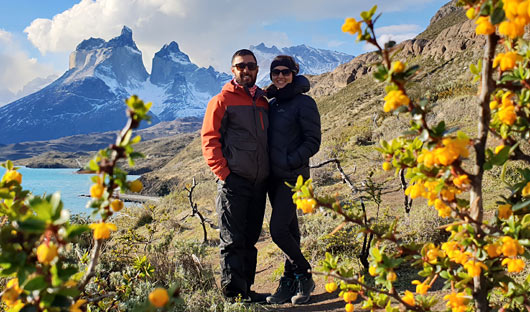
We cannot recommend Hayley from South America Travel Centre (SATC) more highly. Our entire trip was planned perfectly from the second we left Sydney. Not only did she incorporate all of our preferred destinations, Hayley also made suggestions on additional places based on our preferences and some of these turned out to be the highlights of our trip! We tend to be more independent travellers and Hayley was able to create the perfect mix of seamless travel with the flexibility for us throughout the journey to take advantage of any unexpected opportunities that arose. The guides at every location were extremely knowledgeable and offered excellent suggestions on everything from safety through to restaurants and laundry locations. I absolutely cannot fault the services provided both locally and in Australia from the SATC team.
Aimee Hudspeth and Shane R (Peru, Argentina and Chile)